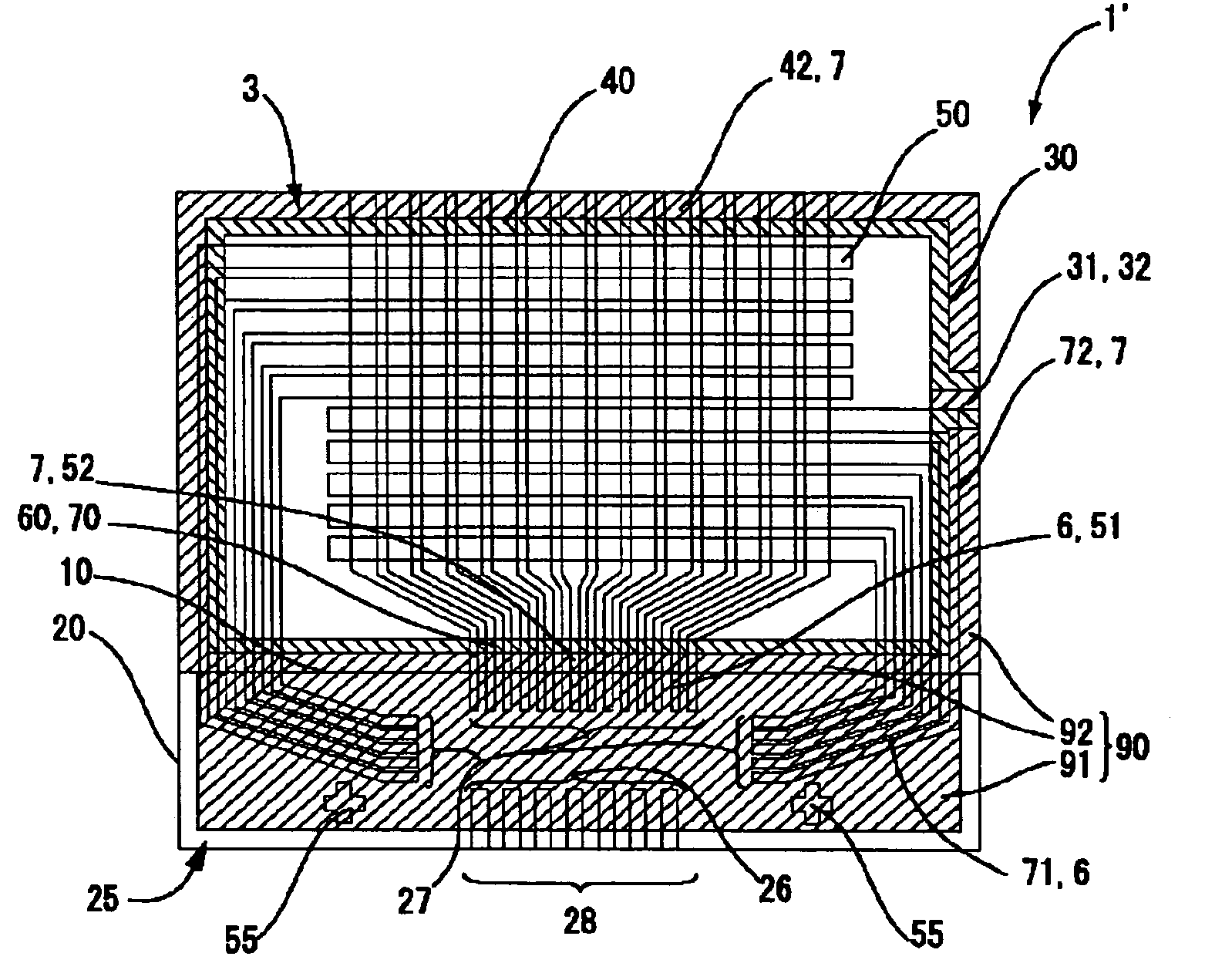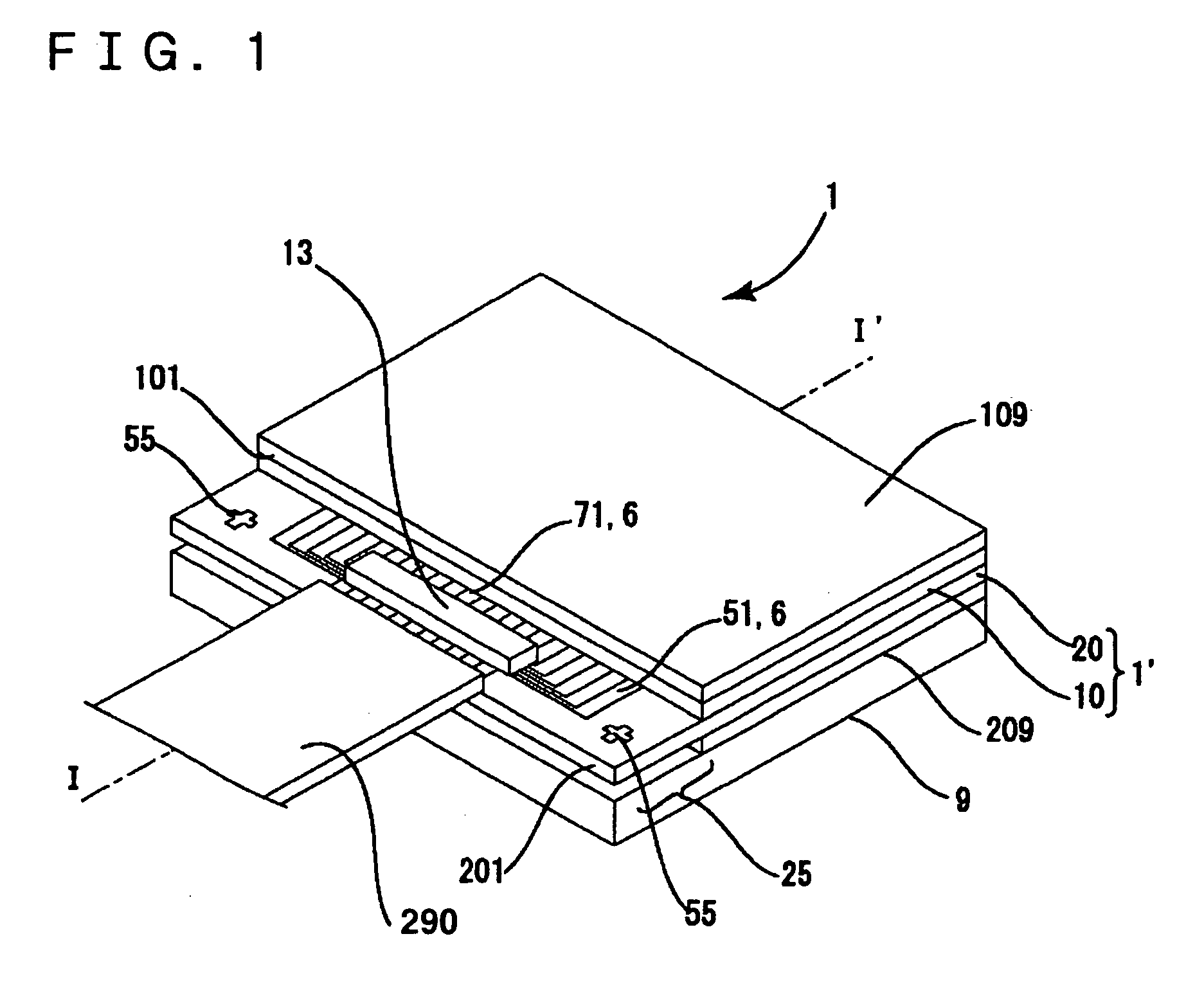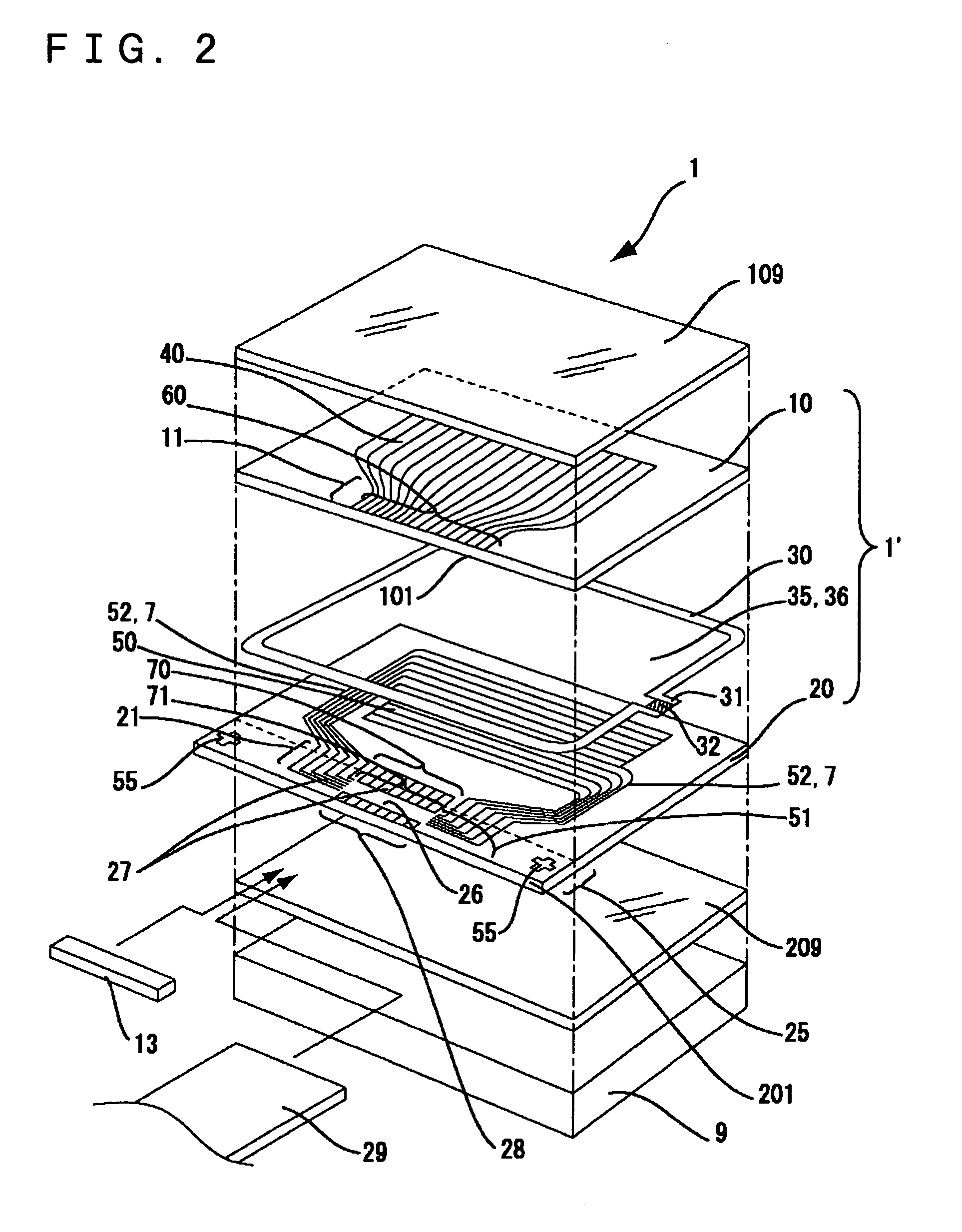Method for manufacturing electro-optical device, electro-optical device, and electronic apparatus
- Summary
- Abstract
- Description
- Claims
- Application Information
AI Technical Summary
Benefits of technology
Problems solved by technology
Method used
Image
Examples
first embodiment
[0088
[0089]FIG. 6(A) is a diagram schematically illustrating fine scratches or cracks made on the substrate constituting the liquid panel 1′, and FIG. 6(B) is a diagram illustrating a state where the fine scratches or cracks are removed from the substrate by an etching step. FIGS. 7(A) and 7(B) are a plan view and a cross-sectional view of the liquid crystal panel during the manufacturing processes for an electro-optical device, respectively. FIGS. 8(A) and 8(B) are a plan view and a cross-sectional view showing a state where a protection layer is formed when an etching step is performed on the liquid crystal panel in the manufacturing processes of the electro-optical device, respectively. FIGS. 9(A) and 9(B) are a plan view and a cross-sectional view showing a state where a part of the protection layer remains after the etching step is performed on the liquid crystal panel in the manufacturing processes of the electro-optical device, respectively. FIGS. 10(A) to 10(D) show graphs i...
second embodiment
[0105
[0106]The second to sixth embodiments have the same basic structures as the first embodiment. Accordingly, only the characteristic parts of the second to sixth embodiments will now be explained with reference to FIGS. 7 to 9, and the explanation of the same parts will be omitted.
[0107]In this embodiment, similar to the first embodiment, the liquid crystal panel 1′ is cut as a single product in the second break step ST34 shown in FIG. 5(E), and then the wet etching step is performed on the cut faces and edges of the first substrate 10 and the second substrate 20 of the single product liquid crystal panel 1′ before the driving IC 13 is mounted on the protruding region 25 of the single product liquid crystal panel 1′ in the IC mounting step ST35 shown in FIG. 5(F), thereby removing fine scratches or cracks from the edges and the cut faces of the substrates (the etching step ST40).
[0108]In the manufacturing process of the electro-optical device 1, fine scratches or cracks may be ge...
third embodiment
[0115
[0116]In this embodiment, a liquid crystal panel 1′ is cut as a single product in the second break step ST34 shown in FIG. 5(E), and then the wet etching is performed on the edges and cut faces of the first substrate 10 and the second substrate 20 of the single product liquid crystal panel 1′ before the driving IC 13 is mounted on the protruding region 25 of the single product liquid crystal panel 1′ in the IC mounting step ST35 shown in FIG. 5(F), thereby removing fine scratches or cracks from the edges and the cut faces of the substrates (etching step ST40). In the manufacturing process of an electro-optical device 1, fine scratches or cracks may be generated on the cut faces and edges of the first substrate 10 and the second substrate 20 as well as on other surfaces thereof. In order to remove such scratches and cracks, the etching step ST40 can be performed not only on the cut faces and edges of the first substrate 10 and the second substrate 20 but also on the other surfac...
PUM
 Login to View More
Login to View More Abstract
Description
Claims
Application Information
 Login to View More
Login to View More - R&D
- Intellectual Property
- Life Sciences
- Materials
- Tech Scout
- Unparalleled Data Quality
- Higher Quality Content
- 60% Fewer Hallucinations
Browse by: Latest US Patents, China's latest patents, Technical Efficacy Thesaurus, Application Domain, Technology Topic, Popular Technical Reports.
© 2025 PatSnap. All rights reserved.Legal|Privacy policy|Modern Slavery Act Transparency Statement|Sitemap|About US| Contact US: help@patsnap.com



